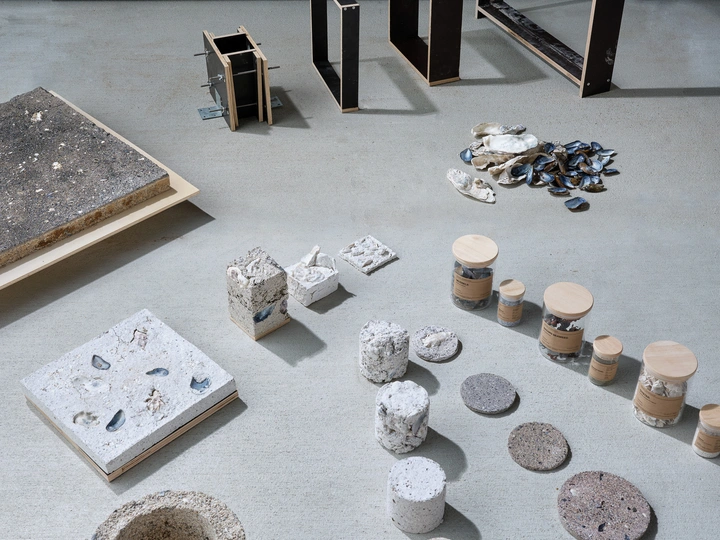Seacrete: Reimagining new materials and Landscapes

Studio Lotek, founded by Lotte Wigman and Ludo Poot in Eindhoven (NL), operates at the intersection of material research, architecture, and ecology.
Lotte Wigman (cum laude graduate, Design Academy Eindhoven) is a material, spatial, and systems designer fascinated by biology, archaeology, marine life, and vernacular architecture. Her work focuses on designing for both human and nonhuman entities, weaving elements from history and nature into narratives that connect the past with sustainable futures. Lotte’s design methodology combines theory with hands-on experimentation and extensive fieldwork.
Ludo Poot is a spatial designer and visual documenter focused on creating healthy environments where human and ecological needs strengthen one another. With a background in interaction design and hands-on crafts, he bridges digital thinking with material awareness.
Together, the duo develops regenerative design systems that reframe architecture as a living part of ecological cycles.
Studio Lotek’s projects—Seacrete, Fossilecrete, and Negotiating Boundaries—explore how architecture can actively restore ecosystems. Their work has been exhibited at Dutch Design Week, The Kazerne, and has received multiple nominations and awards.
The studio’s practice is collaborative by nature, engaging with marine biologists, ecologists, material scientists, architects, craftspeople, local communities, and (aquaculture) industries to co-create materials and habitats that support biodiversity while reducing environmental impact.
Our proposal, Seacrete investigates how material innovation can contribute to a regenerative architectural practice. A building material derived from waste seashells from Dutch aquaculture. Inspired by fossiliferous limestone and traditional shell lime architecture, Seacrete is developed through fieldwork-driven research and hands-on experimentation, combining marine biology, materials science, and vernacular construction techniques
Material raises questions about value, ownership, and the role of architecture in the climate crisis.
The project embraces erosion, sea-level rise, and ecological succession as design principles rather than threats. Structures made from Seacrete are conceived as transitional: initially providing space for humans, they eventually become biotopes for nonhuman life. This approach embodies the principles of the Symbiocene, a term that calls for design that supports both human and non-human entities
With Seacrete, we aim to apply this knowledge in a broader cultural context. The materials provide a framework for initiating dialogues about extraction and restorative practices. We work at the scale of objects, installations, landscape interventions, and ecosystem restoration.
We envision the project evolving in two directions:
Deepening material research in collaboration with architecture and design institutions.
Applying the materials in spatial contexts where ecological and social issues intersect, such as coastal protection or circular redevelopment.
Our work is an invitation to see architecture as a living system that actively restores rather than consumes. This project demonstrates that architecture can be a positive ecological force: restoring ecosystems, enriching biodiversity, and reimagining building materials as integral components of life-supporting cycles.